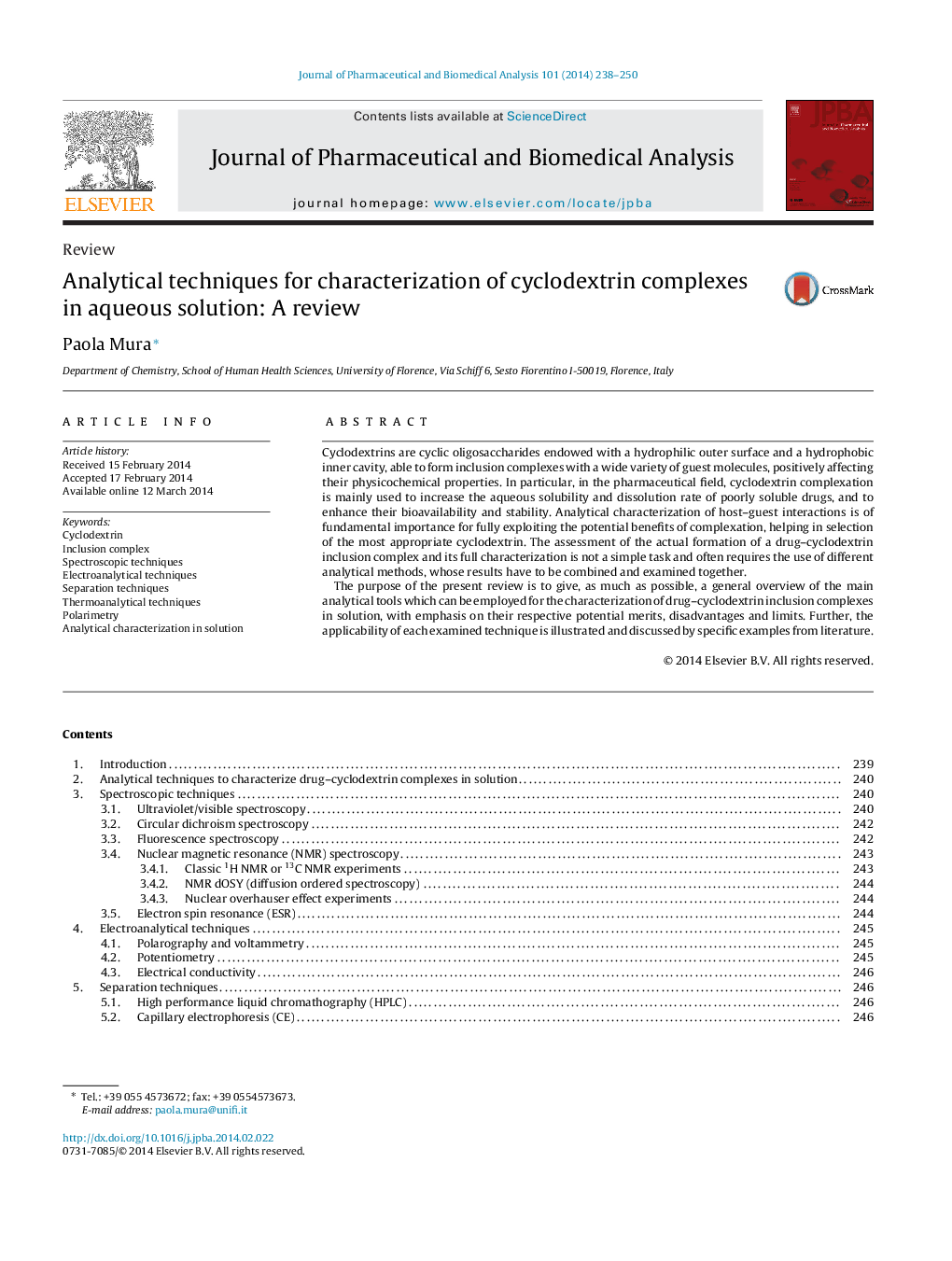| Article ID | Journal | Published Year | Pages | File Type |
|---|---|---|---|---|
| 1221406 | Journal of Pharmaceutical and Biomedical Analysis | 2014 | 13 Pages |
•The main analytical tools for characterization of drug–cyclodextrin complexes in solution are reviewed.•The potential merits, disadvantages and limits of each method are discussed.•The actual applicability of each method is illustrated by specific examples from literature.
Cyclodextrins are cyclic oligosaccharides endowed with a hydrophilic outer surface and a hydrophobic inner cavity, able to form inclusion complexes with a wide variety of guest molecules, positively affecting their physicochemical properties. In particular, in the pharmaceutical field, cyclodextrin complexation is mainly used to increase the aqueous solubility and dissolution rate of poorly soluble drugs, and to enhance their bioavailability and stability. Analytical characterization of host–guest interactions is of fundamental importance for fully exploiting the potential benefits of complexation, helping in selection of the most appropriate cyclodextrin. The assessment of the actual formation of a drug–cyclodextrin inclusion complex and its full characterization is not a simple task and often requires the use of different analytical methods, whose results have to be combined and examined together.The purpose of the present review is to give, as much as possible, a general overview of the main analytical tools which can be employed for the characterization of drug–cyclodextrin inclusion complexes in solution, with emphasis on their respective potential merits, disadvantages and limits. Further, the applicability of each examined technique is illustrated and discussed by specific examples from literature.
Graphical abstractFigure optionsDownload full-size imageDownload as PowerPoint slide
